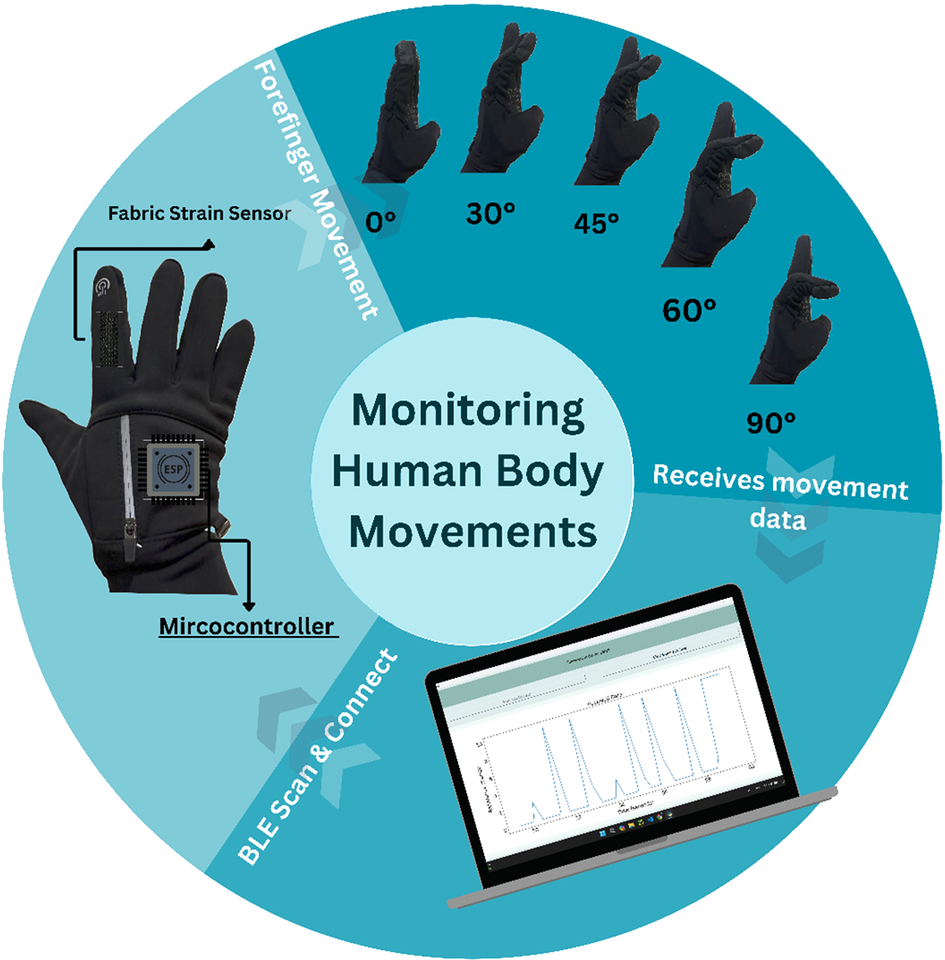Volume 6 - 2025
Latest volume of Wearable Technologies
Contents
Research Article
Assessing real-world movements using consumer-grade wearable devices: Measuring segment orientations and movement quality
-
- Published online by Cambridge University Press:
- 19 November 2025, e54
-
- Article
-
- You have access
- Open access
- HTML
- Export citation
Review Article
Mapping the evidence on occupational exoskeleton use for the workforce in healthcare, social care, and industry: A systematic scoping review
-
- Published online by Cambridge University Press:
- 28 October 2025, e53
-
- Article
-
- You have access
- Open access
- HTML
- Export citation
Research Article
Joint coordination constraints using an upper limb exoskeleton impact novel skill acquisition
-
- Published online by Cambridge University Press:
- 27 October 2025, e52
-
- Article
-
- You have access
- Open access
- HTML
- Export citation
Wearable system for the measurement of gait cycle kinematic and kinetic signals
-
- Published online by Cambridge University Press:
- 17 October 2025, e51
-
- Article
-
- You have access
- Open access
- HTML
- Export citation
Review Article
Biomechanical effects of soft and rigid passive back occupational exoskeletons during load-carrying and static trunk bending tasks in the aeronautics industry
-
- Published online by Cambridge University Press:
- 03 October 2025, e50
-
- Article
-
- You have access
- Open access
- HTML
- Export citation
Hearables: Bioelectronics technological challenges and opportunities
-
- Published online by Cambridge University Press:
- 30 September 2025, e49
-
- Article
-
- You have access
- Open access
- HTML
- Export citation
Research Article
Using a wearable system combining inertial and force sensing for simultaneous detection of limb motion and grasping actions in the workplace
-
- Published online by Cambridge University Press:
- 25 September 2025, e48
-
- Article
-
- You have access
- Open access
- HTML
- Export citation
Corrigendum
The effect of body-conforming passive wearable device with knee flexion taping on dynamic knee stability – CORRIGENDUM
-
- Published online by Cambridge University Press:
- 18 September 2025, e47
-
- Article
-
- You have access
- Open access
- HTML
- Export citation
Review Article
Advancing Gait Rehabilitation: A Systematic Review of Robotic Exoskeletons for Cerebral Palsy
-
- Published online by Cambridge University Press:
- 17 September 2025, e46
-
- Article
-
- You have access
- Open access
- HTML
- Export citation
Research Article
A passive upper limb exoskeleton effectively reduces shoulder muscle activity over a large shoulder workspace
-
- Published online by Cambridge University Press:
- 03 September 2025, e45
-
- Article
-
- You have access
- Open access
- HTML
- Export citation
Gaussian regressor-based adaptive control of exoskeleton joints in the presence of system uncertainty
-
- Published online by Cambridge University Press:
- 26 August 2025, e44
-
- Article
-
- You have access
- Open access
- HTML
- Export citation
The effect of body-conforming passive wearable device with knee flexion taping on dynamic knee stability
-
- Published online by Cambridge University Press:
- 26 August 2025, e43
-
- Article
-
- You have access
- Open access
- HTML
- Export citation
Impact of a shoulder exosuit on range of motion, endurance, and task execution in users with neurological impairments
-
- Published online by Cambridge University Press:
- 11 August 2025, e42
-
- Article
-
- You have access
- Open access
- HTML
- Export citation
Energy conservation-based on-line tuning of an analytical model for accurate estimation of multi-joint stiffness with joint modular soft actuators
-
- Published online by Cambridge University Press:
- 11 August 2025, e41
-
- Article
-
- You have access
- Open access
- HTML
- Export citation
A novel portable device and validation procedure for transcutaneous electrical nerve stimulation
-
- Published online by Cambridge University Press:
- 11 August 2025, e40
-
- Article
-
- You have access
- Open access
- HTML
- Export citation
Simulation of stroke gait impairment correction using cable-driven lower limb rehabilitation exoskeleton (C-LREX)
-
- Published online by Cambridge University Press:
- 08 August 2025, e39
-
- Article
-
- You have access
- Open access
- HTML
- Export citation
Decoupled, wearable soft robotic rehabilitation device for the upper limb
-
- Published online by Cambridge University Press:
- 07 August 2025, e38
-
- Article
-
- You have access
- Open access
- HTML
- Export citation
Biomechanical and physiological effects of passive upper limb exoskeletons in simulated manufacturing tasks
-
- Published online by Cambridge University Press:
- 01 August 2025, e37
-
- Article
-
- You have access
- Open access
- HTML
- Export citation
Performance characterization of a novel semi-active exoskeleton for overhead work
-
- Published online by Cambridge University Press:
- 30 July 2025, e36
-
- Article
-
- You have access
- Open access
- HTML
- Export citation
Frugally inventive carbon fabric-based wearable sensor for monitoring human body movements
-
- Published online by Cambridge University Press:
- 25 July 2025, e35
-
- Article
-
- You have access
- Open access
- HTML
- Export citation






